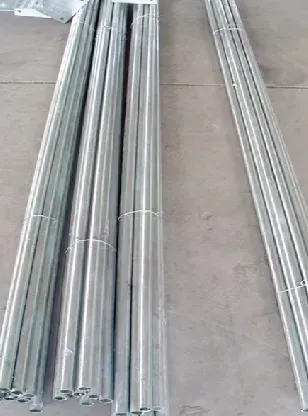loading...
- No. 9, Xingyuan South Street, Dongwaihuan Road, Zaoqiang County, Hengshui, Hebei, China
- admin@zjcomposites.com
- +86 15097380338
- Welcome to visit our website!
frp rebar price
Understanding the Factors Influencing FRP Rebar Prices
Fiber Reinforced Polymer (FRP) rebar is gaining popularity as an alternative to traditional steel rebar in construction projects. Its unique properties, including high tensile strength, low weight, corrosion resistance, and ease of handling, have made it a material of choice in various applications, particularly in corrosive environments like marine structures, bridges, and underground construction. However, as demand grows, understanding the factors influencing FRP rebar prices becomes essential for contractors, builders, and investors alike.
1. Material Composition and Manufacturing Process
The price of FRP rebar is significantly influenced by its material composition. FRP rebar is typically composed of a polymer matrix reinforced with glass, carbon, or aramid fibers. The cost of these raw materials varies based on quality, production method, and market demand. For instance, carbon fiber is considerably more expensive than glass fiber, which can lead to substantial price differences in the final product. Additionally, the manufacturing process itself, whether it’s pultrusion, filament winding, or other technologies, determines production efficiency and ultimately impacts pricing.
2
. Market Demand and Supply DynamicsThe construction industry is cyclical, and demand for FRP rebar can fluctuate based on economic conditions, infrastructure projects, and technological advancements. In urban areas where infrastructure is deteriorating, and new construction projects are in demand, FRP rebar's lightweight and corrosion-resistant attributes make it an appealing option. Conversely, during economic downturns or periods of reduced construction activity, demand may decline, leading to potential price reductions as manufacturers aim to maintain sales volumes.
Moreover, the supply chain dynamics play a crucial role. If the production capacity for FRP rebar is limited and demand surges, prices can increase rapidly due to scarcity. Conversely, if many suppliers enter the market, competition may foster lower prices.
3. Technological Advancements
Technological innovation in the manufacturing of FRP rebar can largely impact costs. As new methods and materials are developed, production processes can become more efficient, reducing costs and potentially lowering prices for end-users. Companies that invest in research and development to improve the performance characteristics and production efficiency of FRP rebar may offer competitive pricing strategies. Adoption of automation and advanced manufacturing techniques can also lead to economies of scale, which can help decrease production costs.
frp rebar price

4. Regulatory Environment and Certification Costs
Compliance with building codes and standards impacts the price of FRP rebar. Manufacturers often need to invest substantially in testing and certification to ensure that their products meet the required standards for performance and safety. This investment can be reflected in the final price of FRP rebar. Additionally, regulations may change, potentially resulting in higher compliance costs or the need for redesigns, which would subsequently influence pricing.
5. Geographical Factors
The geographical location of production facilities can also affect FRP rebar pricing. If a manufacturer is located far from key markets, shipping and logistics costs can add to the final price. Furthermore, in regions where demand is high and supply is lacking, prices may be further escalated. Additionally, local economic conditions, labor costs, and availability of raw materials can vary widely, affecting overall pricing strategies.
6. Competitor Pricing Strategies
The competitive landscape also plays a pivotal role. Underpricing is one tactic employed by companies seeking to gain market share, directly affecting overall prices in the industry. Conversely, a monopoly or oligopoly situation can allow certain suppliers to maintain higher prices. Understanding competitor strategies is essential for assessing market conditions and pricing movements in the FRP rebar sector.
Conclusion
The price of FRP rebar is influenced by a multitude of factors ranging from material costs and manufacturing processes to market demand, technological innovations, regulatory environments, and geographical dynamics. As the construction industry evolves and the demand for sustainable and durable materials increases, understanding these variables becomes crucial for stakeholders in the construction sector. A comprehensive grasp of these dynamics allows businesses to make informed decisions regarding their projects and investments involving FRP rebar, ultimately contributing to the successful completion of modern infrastructural endeavors.
-
The Rise of FRP Profiles: Strong, Lightweight, and Built to LastNewsJul.14,2025
-
SMC Panel Tanks: A Modern Water Storage Solution for All EnvironmentsNewsJul.14,2025
-
GRP Grating: A Modern Solution for Safe and Durable Access SystemsNewsJul.14,2025
-
Galvanized Steel Water Tanks: Durable, Reliable, and Ready for UseNewsJul.14,2025
-
FRP Mini Mesh Grating: The Safer, Smarter Flooring SolutionNewsJul.14,2025
-
Exploring FRP Vessels: Durable Solutions for Modern Fluid HandlingNewsJul.14,2025
-
GRP Structures: The Future of Lightweight, High-Performance EngineeringNewsJun.20,2025
